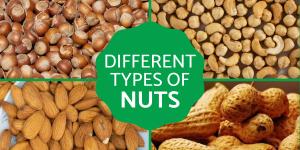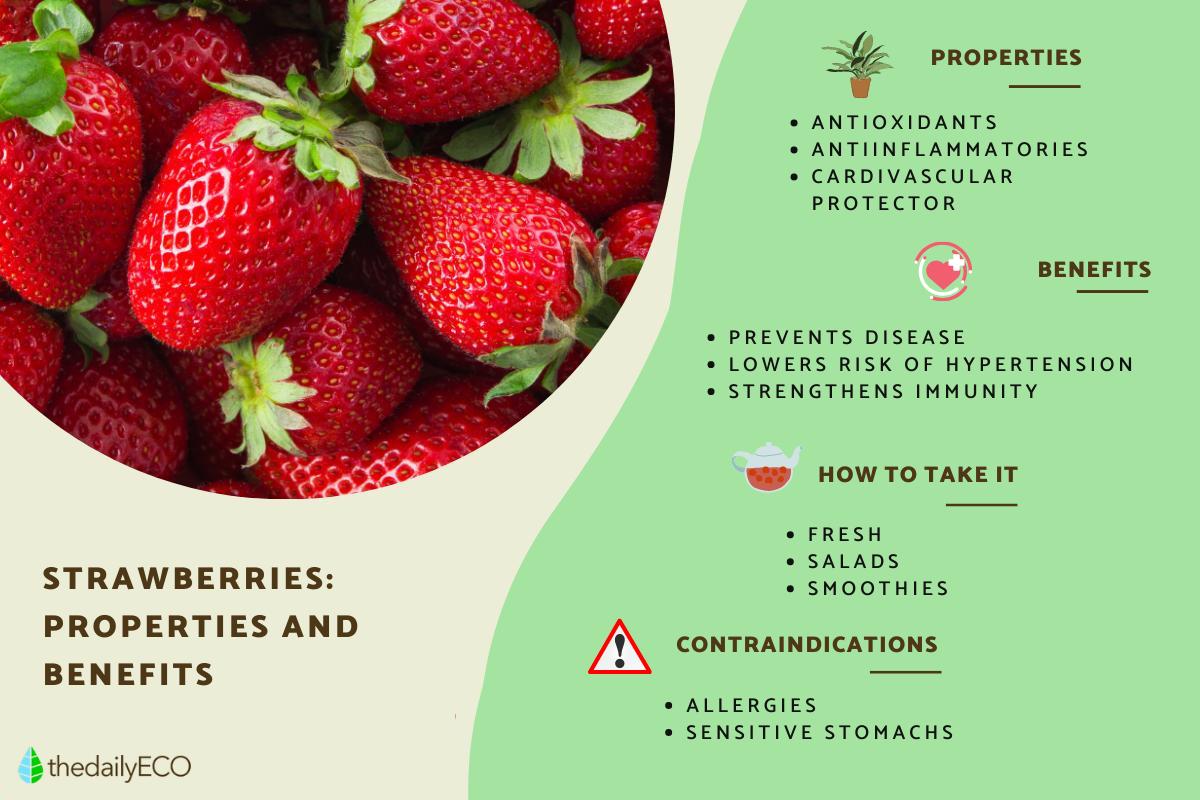Strawberry Properties, Benefits and Contraindications


Although we can find them in the wild, the strawberries we consume at home are almost always from the hybrid variety Fragaria x ananassa. This is a commercial hybrid plant which provides the red berries so many people enjoy across the world. Belonging to the Rosaceae family, their popularity is not only due to their sweet taste. They are also very beneficial to human health, being rich in various nutritional elements which can provide certain advantages when consumed as part of a balanced diet. In particular, they can offer benefits to the immune system and cardiovascular health, as well as reducing the chances of neurodegenerative and diabetic diseases.
At thedailyECO, we discover the properties, benefits and contraindications of strawberries. In doing so, we learn how strawberries can help us to stay healthy, as well as when they need to be avoided.
What are strawberries?
The strawberry is a delicious fruit that comes from a herbaceous, perennial, rhizomatous and stoloniferous plant that has leaves with three leaflets. Its flowers have five whitish petals and when fertilized they give rise to an aggregate fruit.
Although the juicy and delicious strawberry looks like one piece of fruit, it is actually a combination of many tiny fruits called achenes arranged in a berry. The red berry is not a fruit, but an accessory fruit of the achenes. We usually mistake the achenes for seeds, while the fleshy and succulent red part is the receptacle tissue which hold them.
Although the strawberry is typical of cool temperate climates, there are varieties adapted to other conditions that vary from warm temperate to cold temperate climates. Likewise, they grow in soils rich in organic matter which are slightly acidic and have good drainage. This species is cultivated in more than 60 countries around the world, the United States being the largest producer, followed by Turkey, Spain and Mexico.
In summary, the strawberry is a soft fruit of high value and millions of people include it in their diet. They do so for its organoleptic properties and its phytochemical content, since it is an important source of vitamin C, phenolic compounds and antioxidants. We will now learn more about the properties of strawberries, including its benefits and contraindications.
Rather than buying them from a grocer, you would can grow your own strawberries at home. Use the link below to buy strawberry planting bags which will help you to ensure the plants grow easily and you have fruit of the highest quality.

Properties of strawberries
There are few foods that are as delicious to eat, but as nutritious for you as strawberries. This is because strawberries have the following nutritional properties:
- Antioxidants
- Painkillers
- Anti-inflammatory
- Antidiabetic
- Cardioprotective
- Digestive
- Diuretics
Now that you know what their properties are, continue reading to discover the benefits of eating strawberries.
Benefits of strawberries
Strawberries are considered a type of nutraceutical food, also known as a functional food. In addition to providing basic nutrients for the body, they contain bioactive compounds that offer additional health benefits. In short, strawberries are good because they:
- Help prevent disease: by neutralizing or removing harmful molecules called free radicals, preventing damage to our DNA and improving the way our cells produce energy.
- Decrease the risk of hypertension: reduce total and LDL cholesterol and cardiovascular risk factors.
- Increase the level of HDL cholesterol: they do so by reducing the risk of thrombosis or heart attacks.
- Reduce the risk type 2 diabetes: by maintaining a balance in lipid profiles, they can help people avoid contracting this type of diabetes.
- Decrease the inflammatory response: they do so due to their high content of phenolic compounds.
- Strengthen the immune system: this can happen due to their high content of antioxidants such as vitamin C, anthocyanins and flavonoids.
Discover more about the properties and benefits of other fruits with our article on the properties and benefits of mango.

How to eat strawberries
If you want to enjoy strawberries as part of a balanced diet, you will need be able to eat them in the following ways:
- Fresh: the most nutritious way to eat strawberries is directly, washing them well and eating them whole.
- Salads: strawberries can be an excellent addition to salads. Cut them into slices or chunks and add them to your green salads for a touch of sweetness and color. They can work for both sweet and savory salads.
- Shakes and smoothies: add strawberries to shakes and smoothies for a refreshing and nutritious drink. Mix strawberries with other fruits, yogurt, milk or non-dairy milk and ice for a creamy drink. You can freeze your strawberries to make smoothies in the future and to use less ice.
- Yogurt: bombine fresh strawberries with plain or Greek yogurt for a healthy breakfast or snack. You can also add granola or nuts.
- Desserts: strawberries are a popular ingredient in many desserts. You can use them to make cakes, pastries, toppings, ice cream or simply combine them with whipped cream.
- Jams and sauces: cook the strawberries with a little sugar to make homemade jam. You can also prepare a strawberry sauce to accompany meat, fish or desserts.

Contraindications of strawberries
Although strawberries are generally safe for most people, there are some contraindications and precautions to be aware of:
- Allergies: some people may be allergic to strawberries, which can trigger symptoms such as hives, itching, swelling or breathing difficulties. If any of these symptoms are experienced after consuming strawberries, it is important to avoid them and seek medical attention if necessary.
- Upset stomach: they are not recommended for those who have chronic stomach pain, diarrhea or gastritis.
In general, most people can safely enjoy strawberries as part of a balanced and varied diet. However, it is essential to be aware of possible contraindications and to consult a healthcare professional if you have any specific medical concerns or conditions before including them in your diet.
Now that you know more about the properties of strawberries and their benefits, you may also be interested in reading how to plant and grow potted strawberries.
If you want to read similar articles to Strawberry Properties, Benefits and Contraindications, we recommend you visit our Healthy foods category.
- Tarazona Roch, A. (2020). “Study of the antioxidant and anti-inflammatory activity of strawberry (Fragaria x ananassa) and its relationship with the composition of bioactive compounds”.
- Zaragoza Ortega, M. D. C. (2015). “Antioxidant capacity of different varieties of strawberry (Fragaria x ananassa Duch) in postharvest under refrigerated conditions” (Master's thesis).








